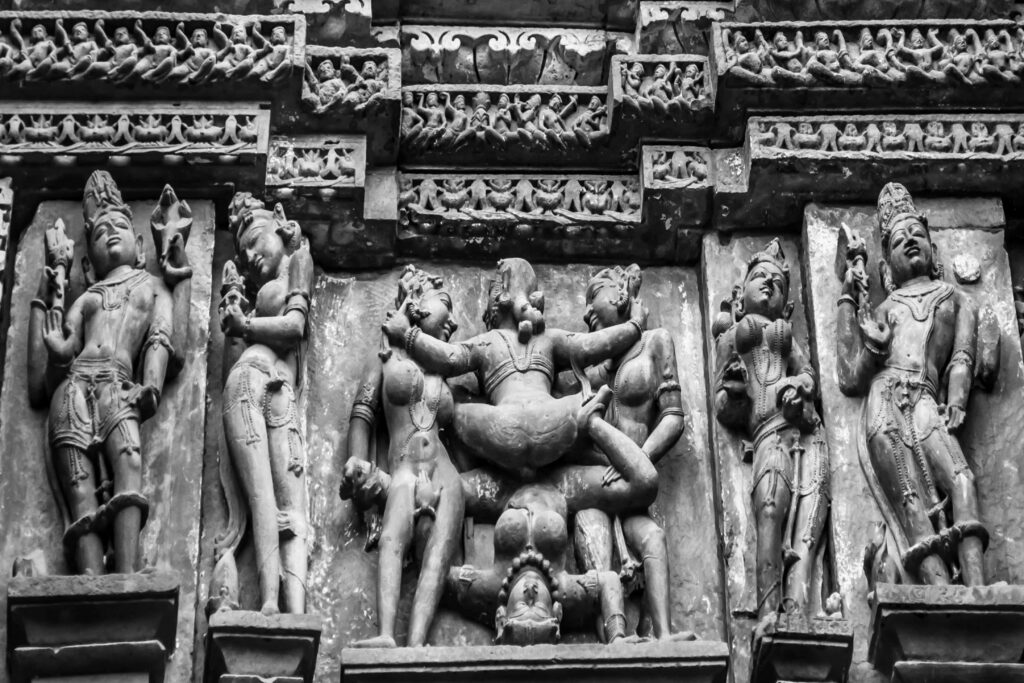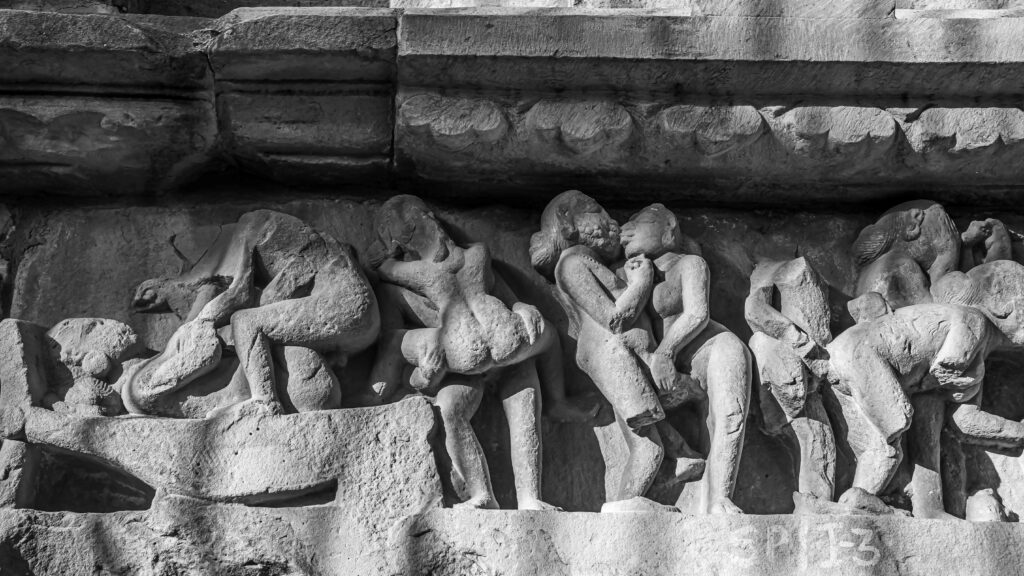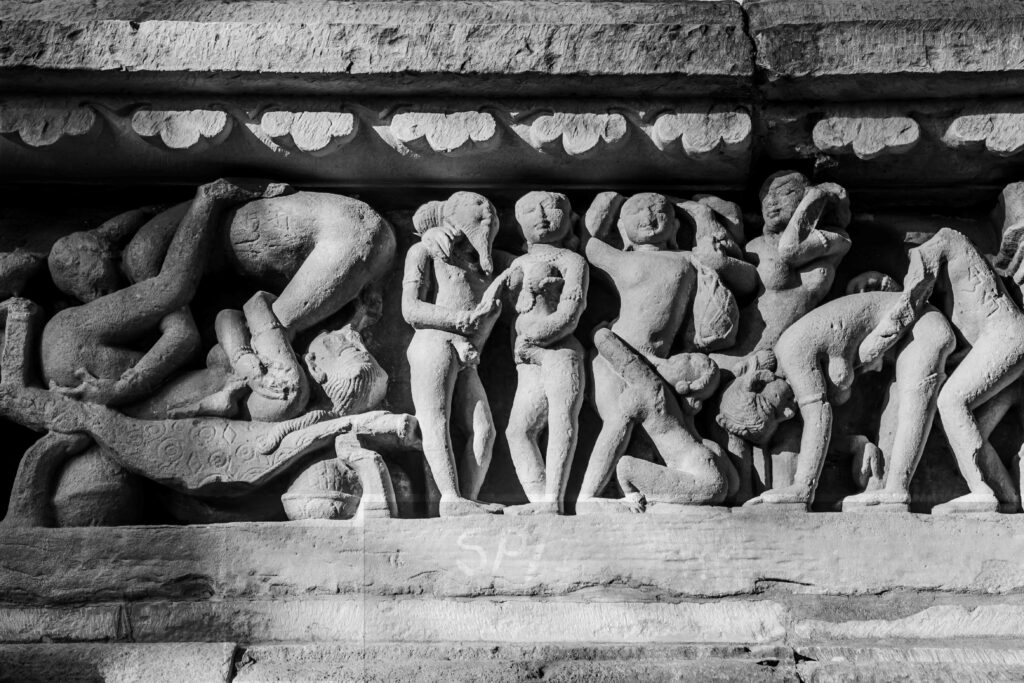Standing in front of the temples of Khajuraho, I felt as if time had stood still. The stones, though weathered by centuries, still carried whispers of stories carved by master artisans. As I gazed at the intricate sculptures, I realized I wasn’t just looking at art — I was witnessing a celebration of life, love, and desire frozen in time.
When I first saw the erotic sculptures of Khajuraho, it was mesmerizing. These weren’t just carvings on temple walls; they were bold expressions of human emotions, relationships, and the eternal dance between the sacred and sensual.
The First Glimpse
Walking into the temple complex, I was overwhelmed by the sheer detailing. Every corner seemed alive — gods, goddesses, celestial beings, and couples entangled in graceful yet intimate postures. The erotic sculptures, in particular, drew me in. Far from being vulgar, they radiated a sense of divinity and freedom, reminding me that in ancient India, the body and soul were never seen as separate.
Through my lens, I tried to capture not just the form, but the spirit. The playfulness of lovers, the confidence in their postures, and the unapologetic celebration of intimacy — it all spoke of a culture that embraced life in its entirety.




Art Beyond Time
Khajuraho was built between 950 and 1050 AD by the Chandela dynasty, yet its message feels timeless. The sculptures tell us that spirituality and sensuality are not opposites; they are complementary. Love, desire, and connection are as divine as prayer and meditation.
What fascinated me most was how these temples boldly broke the barriers we often place around art today. In a world where expressions of intimacy are often judged, Khajuraho stands as a reminder that beauty lies in acceptance. The erotic play carved into stone is not just about physical union, but about harmony — of man and woman, of the earthly and the divine, of the fleeting and the eternal.
A Photographer’s Journey
As a traveler and photographer, I seek stories that go beyond landscapes and monuments. Khajuraho gave me exactly that. It gave me a window into the soul of a civilization that wasn’t afraid to express what it felt. Behind every shot I took, there was an emotion — curiosity, admiration, even reverence.
The black-and-white frames I captured allowed me to focus on the essence rather than distraction. Stripped of color, the rawness of the sculptures stood out. Every curve, every gesture, every intertwined form told a story of love that was fearless, divine, and eternal.
Why Khajuraho Matters Today
In our modern lives, where love is often reduced to fleeting glances on screens, Khajuraho feels like a lesson. These sculptures remind us that desire is not something to be hidden, but something to be understood, respected, and celebrated.
As I walked away from the temple, I carried with me not just photographs, but an experience — an intimate dialogue with history. Khajuraho didn’t just leave me with memories; it left me with a realization. That art is not about stone or paint, but about truth. And sometimes, truth is found in the most unexpected forms — in the embrace of lovers carved into a temple wall a thousand years ago.

Leave a reply